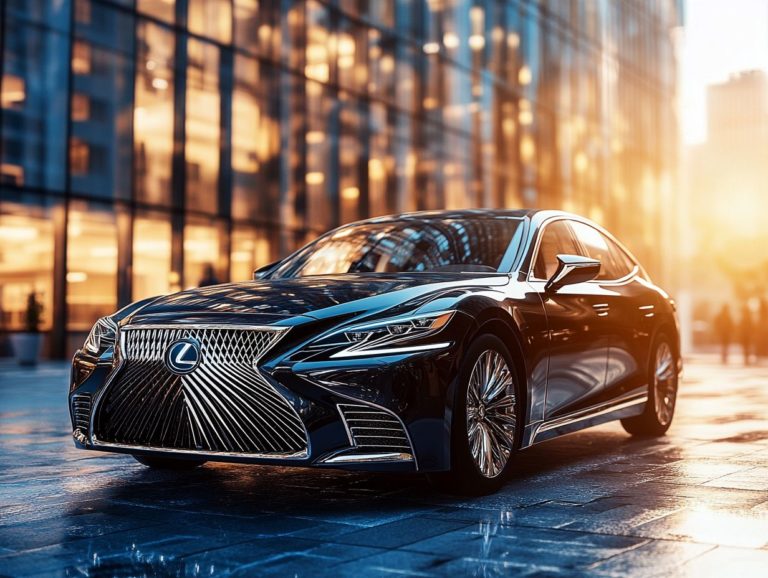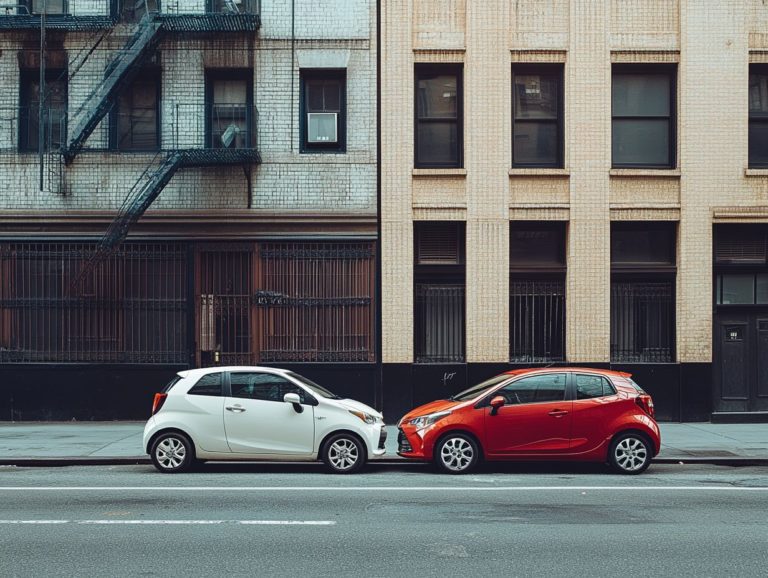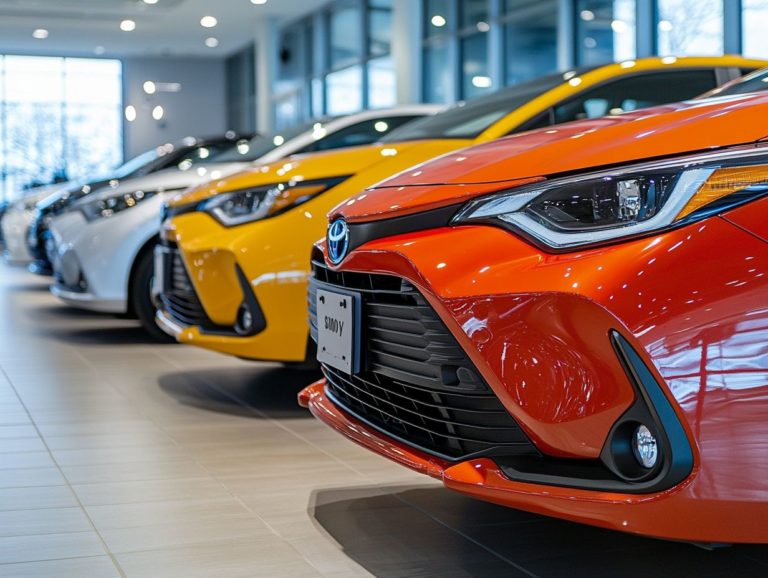Price Analysis: Sedan vs. SUV in 2024
In today s automotive landscape, deciding between a sedan and an SUV can feel overwhelming. This is especially true with fluctuating prices and differing ownership costs.
This article reveals critical insights into the essential factors that influence vehicle prices. It presents a side-by-side comparison of sedans and SUVs in the current market, while also offering insights into future price predictions.
You ll explore the total cost of ownership for both vehicle types. Discover how your personal needs can shape your decision.
Join in as you navigate the complexities of car buying in 2024!
Contents
- Key Takeaways:
- Factors Affecting Vehicle Prices
- Price Comparison of Sedans and SUVs
- Future Predictions for Vehicle Prices
- Cost of Ownership for Sedans and SUVs
- Factors to Consider When Choosing Between a Sedan and SUV
- Frequently Asked Questions
- What is the expected price difference between sedans and SUVs in 2024?
- Why are sedans expected to be cheaper than SUVs in 2024?
- Will the price difference between sedans and SUVs continue to grow in 2024?
- Are there any specific sedan or SUV models that will have a significant price difference in 2024?
- What advantages do sedans have over SUVs in 2024?
- How can I use this price analysis to decide between a sedan or SUV in 2024?
Key Takeaways:
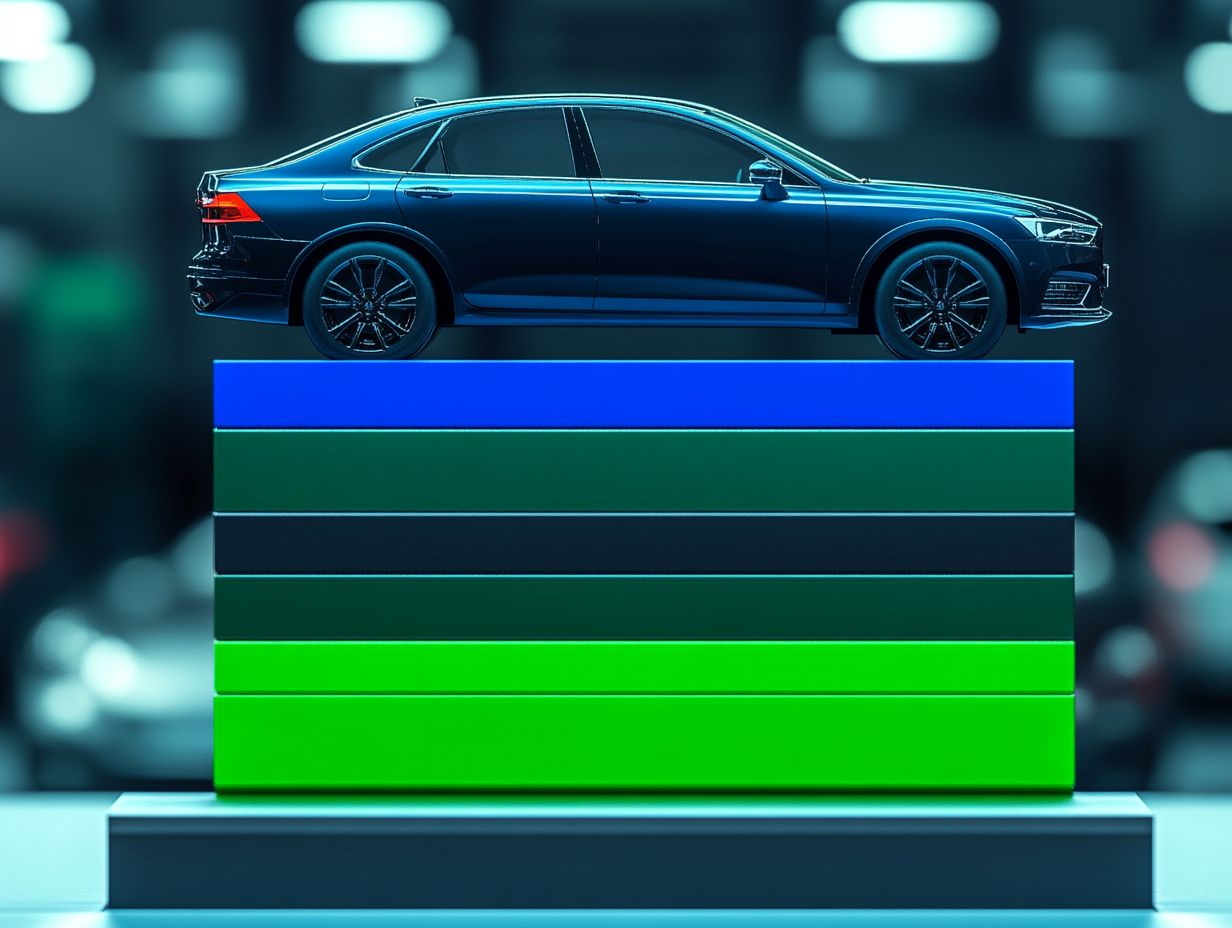
- Even though both are in the same vehicle class, sedans and SUVs have different price ranges due to various factors such as size, features, and brand.
- With the rise of electric and hybrid vehicles, the price of sedans and SUVs is predicted to decrease in 2024.
- When deciding between a sedan and an SUV, consider your personal needs and preferences and the additional expenses associated with each vehicle type.
Explanation of Vehicle Types
Understanding the various vehicle types is crucial for you as you navigate the new car market. This is especially important when weighing options like SUVs, sedans, and more specialized categories such as compact SUVs or luxury models.
Each type caters to distinct needs, making it essential to choose wisely. Take the Mazda CX-90, for example; it boasts spacious interiors and advanced safety features that cater to families and adventure-seekers alike.
Meanwhile, electric and hybrid vehicles offer eco-friendly alternatives to traditional gasoline engines, becoming increasingly appealing to the environmentally conscious buyer.
When you’re after versatility, knowing the difference between spacious SUVs often equipped with all-wheel drive for enhanced control and sedans, which shine in fuel efficiency and sleek design, is key. Compact SUVs deliver the best of both worlds, providing practicality without compromising on style.
With standout models like the Mazda CX-90 leading the way, you ll find a harmonious blend of power and elegance that suits both your urban commute and family road trips.
Grasping these nuances can significantly impact your purchasing decisions. This ensures that you select a vehicle that aligns perfectly with your lifestyle needs and preferences.
Factors Affecting Vehicle Prices
When navigating the new car market, you’ll encounter various factors that influence vehicle prices. This includes price trends, average transaction prices, and the specific pricing strategies of manufacturers like Tesla.
Grasping these dynamics is essential for you as a buyer, as they are important in deciding the final price during negotiations. Don t overlook operational costs, such as insurance and maintenance, as these can greatly affect the overall affordability of your vehicle.
Key Factors That Impact Cost
Several key factors influence car prices in today’s market. You should be aware of them as you navigate your options. Advanced safety features, fuel economy, and driving conditions all play significant roles in determining overall costs.
For instance, vehicles equipped with cutting-edge driver assistance systems tend to come with higher price tags, while models celebrated for their fuel efficiency may appeal more to budget-conscious buyers.
If you have a larger family, your choice between SUVs and sedans will also affect the pricing dynamics. Safety ratings from respected organizations like the Insurance Institute for Highway Safety (IIHS) and the National Highway Traffic Safety Administration (NHTSA) are crucial in shaping consumer preferences.
A higher safety rating often translates to greater confidence from buyers, leading to increased demand and elevated prices. Furthermore, the size of your family will impact your decisions, as parents typically prioritize spacious vehicles that provide ample room and safety features for their children.
This intricate interplay of safety, family needs, and cost efficiency is what continues to drive the evolution of car pricing in today s competitive landscape.
Price Comparison of Sedans and SUVs
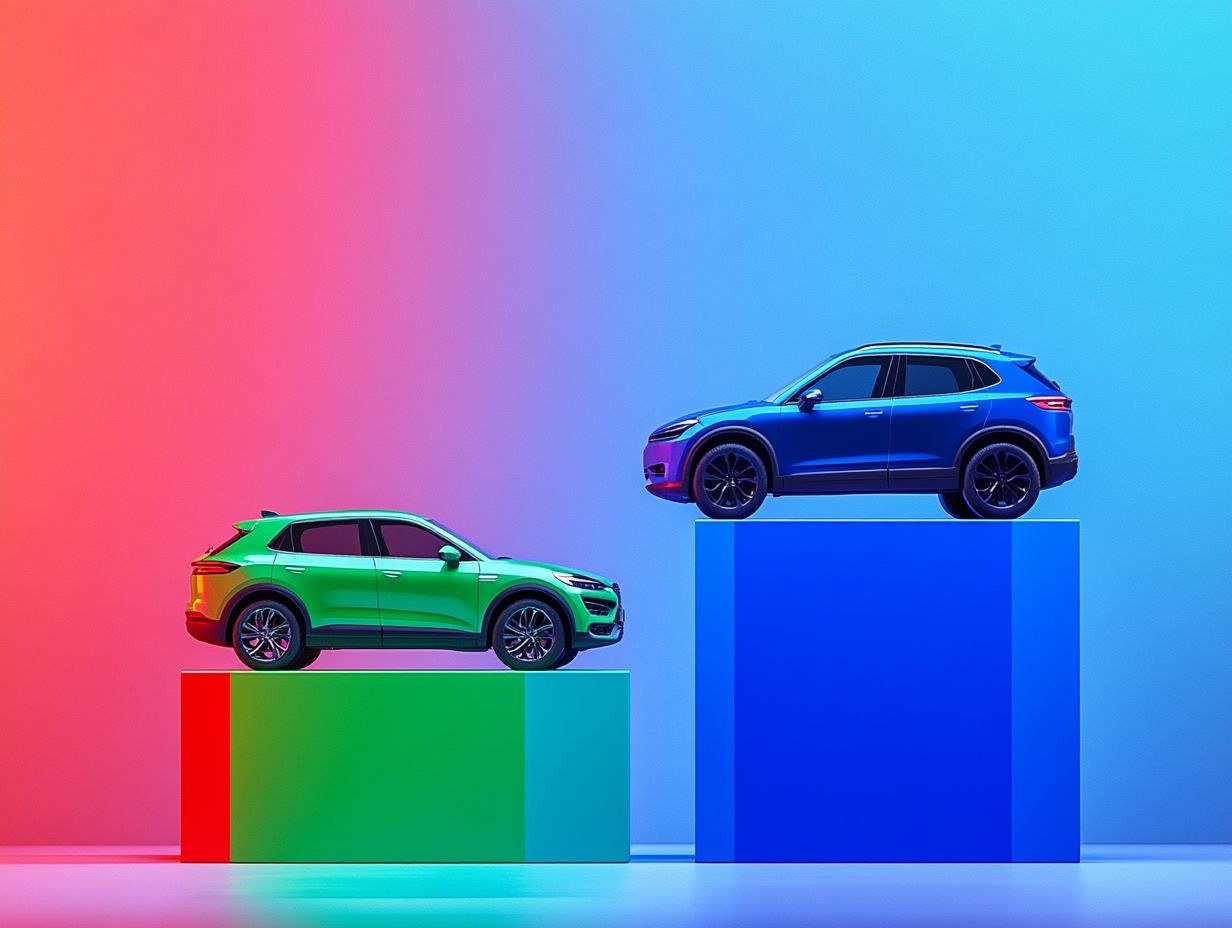
When you compare the prices of SUVs and sedans, you’re engaging in a crucial aspect of making informed decisions in the automotive market. For a deeper understanding, check out this price comparison of new vs. used cars. Price trends are constantly evolving, especially in the luxury vehicle segment.
Generally, SUVs command a higher price point than traditional sedans due to their size and versatility. Take the Mazda CX-90, for example; it showcases the enhanced features typically associated with this category.
Fuel economy is also a key factor to consider as you evaluate long-term operational costs against your initial investment.
Current Market Trends
Current market trends reveal a significant evolution in the new car market, particularly in pricing strategies from major players like Tesla. Understanding these trends is crucial as you navigate the changing price dynamics and evaluate what you get for your money.
As you become more aware of environmental issues, your demand for electric vehicles is reshaping industry dynamics. Manufacturers are compelled to adjust their pricing structures accordingly.
Companies are now focusing on balancing affordability with the allure of advanced technology features. This results in more competitive pricing models. Factors such as government incentives and fluctuating raw material costs are also influencing these pricing strategies.
With a growing emphasis on sustainability and long-term value, the industry is shifting toward vehicles that not only meet your needs but also resonate with your evolving values concerning eco-friendliness and efficiency.
Future Predictions for Vehicle Prices
Future predictions for vehicle prices indicate ongoing fluctuations, largely influenced by technological advancements and changing buyers’ expectations in the new car market.
As operational costs like fuel economy and insurance remain pivotal in your purchasing decisions, the integration of advanced driver assistance systems (features designed to help drivers avoid accidents, like lane-keeping assistance and adaptive cruise control) is poised to impact both initial pricing and long-term value retention.
These emerging trends suggest a significant shift in how you, as a buyer, will evaluate the worth of your investments in vehicles.
Forecasted Changes in Prices
Forecasted changes in vehicle prices suggest that you’re likely to see continued divergence across various segments, especially between traditional sedans and the luxury vehicle market. This shift, influenced by the strategic pricing models of companies like Tesla, opens exciting opportunities for savvy buyers like you to negotiate car prices more effectively.
As competition among automakers intensifies, brands are eager to attract diverse consumer bases with their unique offerings.
As these brands vie for your attention, the evolving pricing strategies will create distinct challenges and advantages for each market segment. If you re in the market for a compact car, you may find that prices remain stable as manufacturers strive to keep them affordable. Conversely, if you re a luxury vehicle enthusiast, brace yourself for a wider price range driven by emerging technologies and enhanced features.
This competitive landscape underscores the importance of savvy price negotiation. Understanding how rival brands are positioned can give you the leverage needed to secure better deals. The varying market demands and the rise of electric vehicles further complicate this intricate pricing dynamic, highlighting the necessity for informed purchasing decisions on your part.
Now is the time to consider how these trends could affect your next vehicle purchase! Stay informed about market trends and sign up for updates regarding vehicle prices.
Cost of Ownership for Sedans and SUVs
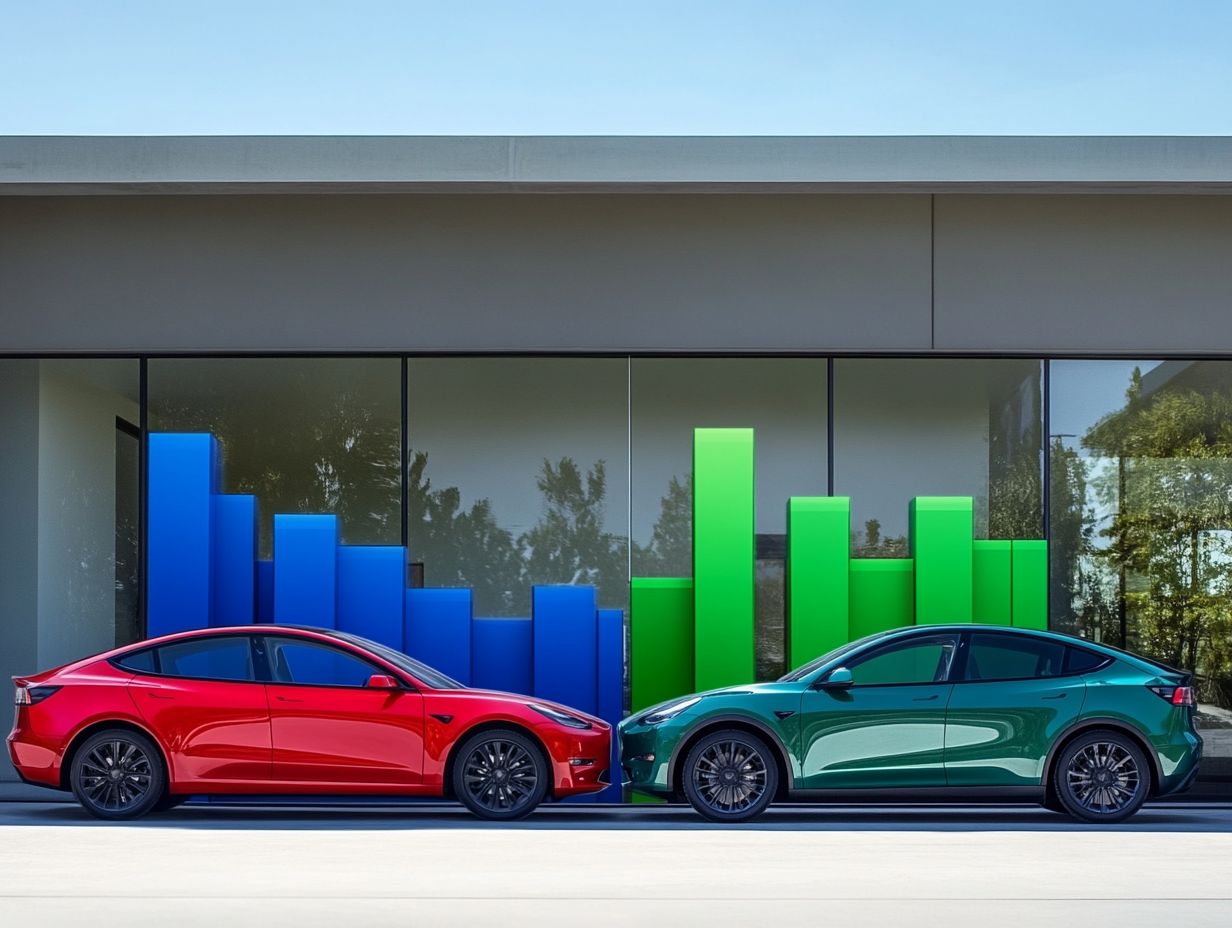
The cost of ownership for sedans and SUVs encompasses a range of expenses, including running costs, fuel efficiency, and insurance. All of these are crucial for families pondering their long-term financial commitments.
By grasping these factors, you empower yourself to make informed decisions, ensuring that the vehicle you choose not only meets your needs but also aligns seamlessly with your budget.
This becomes particularly significant when evaluating safety ratings from reputable organizations like the Insurance Institute for Highway Safety and the National Highway Traffic Safety Administration.
Additional Expenses to Consider
Beyond just the initial purchase price, make sure to consider the additional expenses that come with owning a vehicle. Think about operational costs, the value of safety features, and higher insurance premiums.
Advanced safety features can enhance your driving experience and even influence your insurance rates, making these factors crucial for well-considered choices.
The type of vehicle you choose can significantly impact these ongoing costs. For example, luxury cars often come with higher insurance premiums because of their value, while SUVs may lead to increased maintenance expenses due to additional features.
Regular maintenance like oil changes, tire rotations, and brake checks is essential for keeping your vehicle in top shape. These costs can vary widely based on the make and model you select.
Fuel efficiency is another critical factor in running costs, directly affecting how much you ll spend at the pump over time.
If your vehicle has advanced driver-assistance systems, it might not only provide you with peace of mind but could also lead to discounts on your insurance premiums, making it an investment worth serious consideration.
Factors to Consider When Choosing Between a Sedan and SUV
When deciding between a sedan and an SUV, numerous factors come into play that can significantly shape your choice. Personal needs and preferences, ranging from cargo space to off-road performance, are paramount.
Grasping these distinctions is essential as you evaluate your lifestyle requirements and consider how each vehicle type aligns with them. This is especially true for larger families that may prioritize space and versatility in their daily travels.
Key Factors to Consider
Your personal needs and preferences play a pivotal role in choosing between an SUV and a sedan. You ll want to evaluate your requirements for space and off-road performance.
If you have a larger family, ample cargo space may be at the top of your list. Others might gravitate toward a sedan for its fuel efficiency and ease of maneuvering through urban landscapes.
When considering your lifestyle, if you reside in a suburban or rural area, an SUV might catch your eye with its versatility and capability to tackle various terrains, ensuring that weekend adventures or family road trips are both comfortable and convenient.
On the flip side, if you call the city home, you may find yourself leaning toward the nimble, compact design of a sedan. They slip effortlessly into tight parking spots and glide smoothly through congested streets.
Your driving habits also come into play. If you frequently embark on long-distance commutes, fuel efficiency and lower maintenance costs might tip the scales in favor of a sedan.
However, if outdoor escapades are more your style, the rugged charm of an SUV could be hard to resist.
Frequently Asked Questions
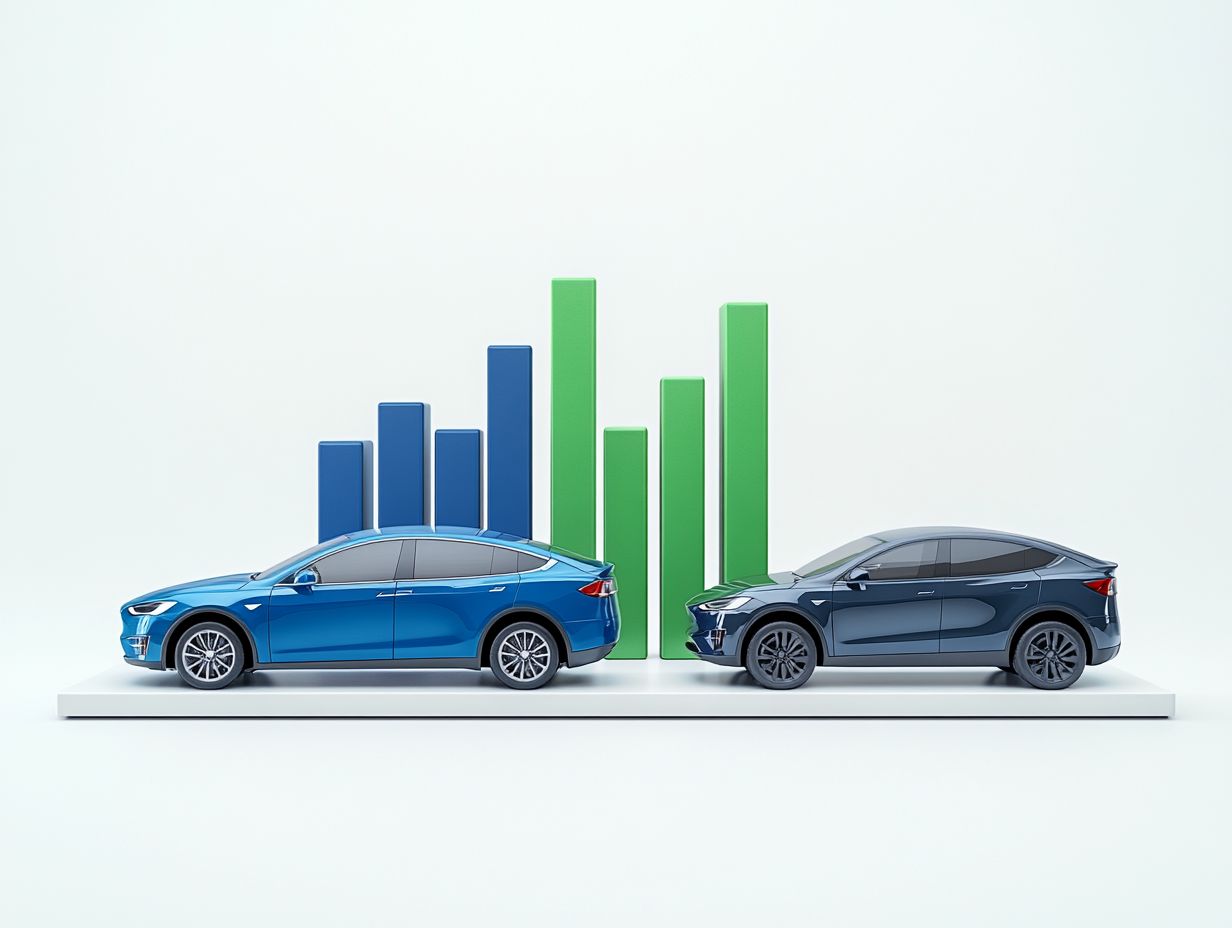
What is the expected price difference between sedans and SUVs in 2024?
Based on our price analysis, sedans are projected to be significantly cheaper than SUVs in 2024. For insights on market trends, check out what to expect from the 2024 SUV market; the exact price difference may vary depending on the make and model.
Why are sedans expected to be cheaper than SUVs in 2024?
This is due to a combination of factors such as market demand, production costs, and competition. Sedans are generally seen as a more affordable and practical option for many consumers.
Start your journey today by comparing the best sedans and SUVs!
Will the price difference between sedans and SUVs continue to grow in 2024?
It’s tough to predict the exact trend. However, current market data suggests that the price gap between sedans and SUVs is likely to widen in 2024, as highlighted in our price comparison of new vs. used cars in 2024.
Are there any specific sedan or SUV models that will have a significant price difference in 2024?
Our analysis indicates that luxury SUVs may have a larger price gap compared to luxury sedans next year. For detailed insights, check out the top compact SUVs: price comparisons for 2024, as this can vary by specific model and brand.
What advantages do sedans have over SUVs in 2024?
Sedans are generally cheaper and offer better fuel efficiency, making them a more affordable choice for daily driving. They also take up less space, making them easier to navigate and park in crowded areas.
How can I use this price analysis to decide between a sedan or SUV in 2024?
Understanding the projected price difference helps you make an informed decision based on your budget. Be sure to consider other factors like features, size, and your intended use before making a purchase.


